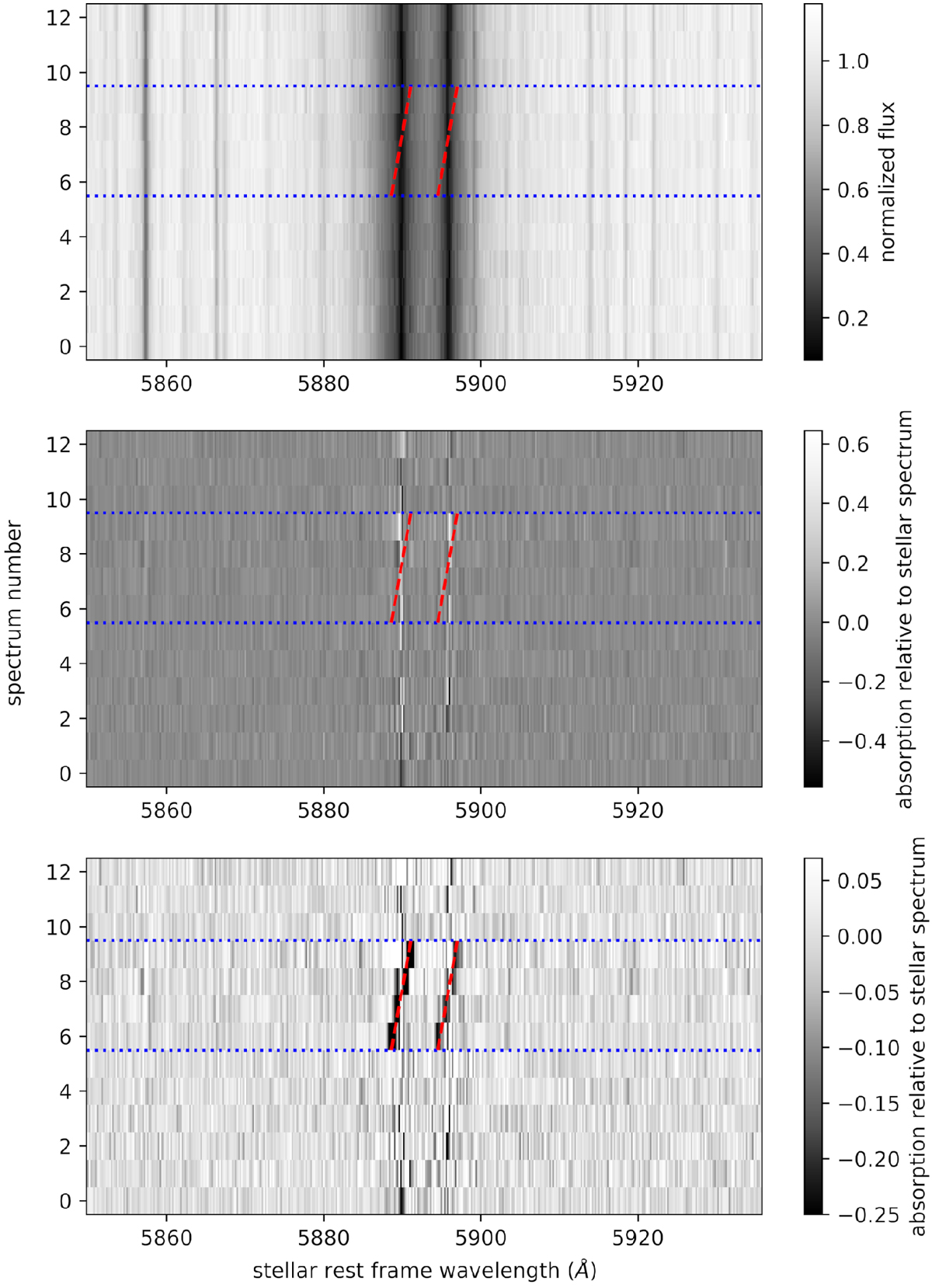Fig. 3

Visual representation of the processing steps as described in Sect. 3. This figure shows the data of Night 4, but the other nights are very similar. The vertical axis of each matrix represents the sequence number of the observed spectrum. First panel: data around the sodium D lines after normalization and alignment in Step 2. Second panel: residual matrix after dividing through the average star spectrum and subtracting the mean (Step 4). Bottom panel: data after injecting an artificial planet signal before Step 2 that absorbs 50% of the stellar flux. The injected planet signal can be seen as a diagonal trace (following the red dashed lines) from spectrum number 6–9 (indicated by the blue dotted lines), resulting from the change in the radial component of the planet orbital velocity during transit.
Current usage metrics show cumulative count of Article Views (full-text article views including HTML views, PDF and ePub downloads, according to the available data) and Abstracts Views on Vision4Press platform.
Data correspond to usage on the plateform after 2015. The current usage metrics is available 48-96 hours after online publication and is updated daily on week days.
Initial download of the metrics may take a while.


